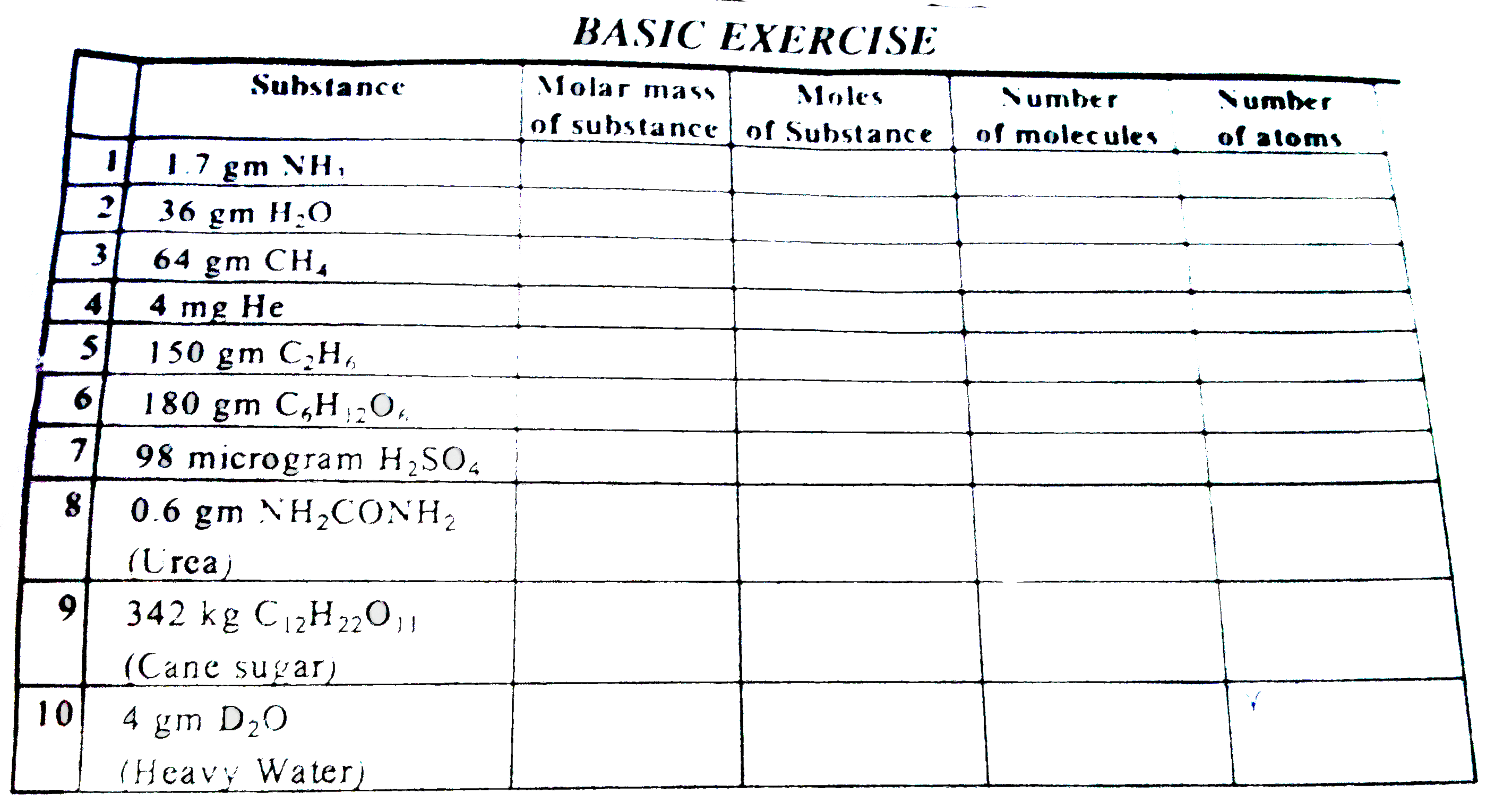A Solid contains 5×1021 number of atoms. If an electron is removed from each of 0.01% of number of atoms, find the charge gained by this solid ?
The solid gains positive charge hence Q = ne
Where n=(5×1021×0.01100)=5×1017
∴Q =5×1017×1.6×10−19∴Q=+0.08C.
Similar Questions
A Solid contains 5×1021 number of atoms. If an electron is removed from each of 0.01% of number of atoms, find the charge gained by this solid?
View SolutionIn 1 g of a solid, there are 5×1021 atoms. If one electrons is removed fron each of 0.01% atoms of the solid, find the charge gained by the solid (given that electronic charge is 1.6×1019C).
View Solution
Knowledge Check
If an object of mass 1 kg contains 4×1020 atoms. If one electron is removed from every atom of the solid, the charge gained by the solid in 1 g is
A2.8 CB6.4×10−2CC3.6×10−3CD9.2×10−4CIf an object of mass 1 kg contains 4×1020 atoms. If one electron is removed from every atom of the solid, the charge gained by the solid in 1 g is
A2.8 CB6.4×10−2CC3.6×10−3CD9.2×10−4C
In 1 gram of solid, there are 5×1021 atoms. If one electron is removed from every one of 0.1% of atoms of the solid, the charge gained by the solid is
View Solution
A box contains 12×1022 number of oxygen atoms. Find moles of O-atoms? (NA=6×1023)
View Solution
A box contains 12×1022 number of oxygen atoms. Find moles of O-atoms? (NA=6×1023)
View SolutionFind maximum number of electrons in Al for which l×mn=0.
(Atomic number of Al=13).
View SolutionFind maximum number of electrons in Al for which l×mn=0.
(Atomic number of Al=13).
View SolutionFind maximum number of electrons in Al for which l×mn=0.
(Atomic number of Al=13).
View Solution
